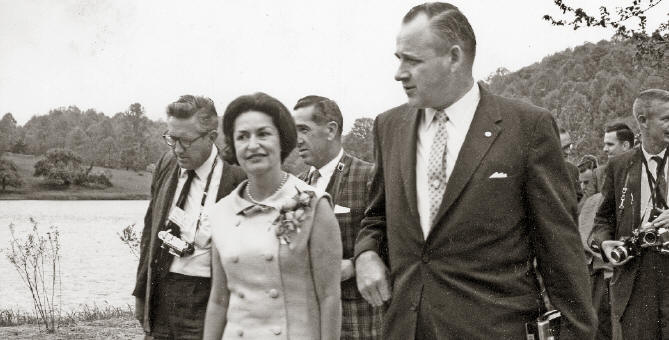I’d like to talk a little bit about the relationship that you had with the Johnson White House and compare it to [your relationship with] the Nixon White House.
Well, we didn’t really have a lot of direct contact with the Nixon White House. It mostly came through the secretary’s office, Walter Hickel, and then Rogers Morton, especially Rogers Morton, who was a personal friend of President Nixon. I did have occasion to deal with some of their staff people early on, especially his [Morton’s] deputy and John Whitaker, who later came over as an undersecretary of the Department of the Interior, and there were several others over there. Of course, I knew Ron Walker. He was head of the president’s advance team. I didn’t have a lot to do with him, because they [Nixon’s senior staff] never went to parks. Nixon, I think, went to Grand Teton National Park once, unlike [John F.] Kennedy, who made a tour of the national parks when he became president.
So there was not a lot of direct contact. But there was enough that they knew who I was, and primarily where we had contact the most was on the Hill, because the Nixon administration wanted no park legislation. Of course, coming off of the Johnson administration, I had a tidal force of legislation in the Congress, and as you see in the record, we passed almost as much in the Nixon administration four years as we did in the Johnson five years, because that tide was moving in and there was literally nothing they could do to stop it. Ron Walker made that statement, which I’m sure you’ve heard, and which I’m sure he will repeat for you, that my relations on the Hill were perhaps better than the president’s in terms of getting legislation through. Nixon reciprocated by never having a park signing ceremony. He never had one, whereas with President Johnson, his staff would set them up before I even got the bill passed. So the relationship was different.
I reckon where the closeness came was with the First Ladies, because in the Nixon administration I was chairman of the Committee for the Preservation of the White House. This was a committee that worked with the First Lady in preserving the furnishings and the historic rooms of the White House. Mrs. Nixon was a very wonderful person. I always felt that I had a very good personal relationship with her. She was a lovely lady, an all-together different kind of personality than the president himself. So I had a very good relationship with her and her staff. Of course, with the Johnson administration my primary relationship was with Mrs. Johnson, and she became a “First Lady of National Parks.” If you had a park trip, she and Liz Carpenter, who was her press secretary, they were gung ho to go. And they went. She was responsible for building up that wave of environmental interest and preservation interest in the National Park System. In the case of the Redwood National Park proposal, she arranged for President Johnson to have a pre-legislative press conference announcing his support for the Redwood National Park, even before he sent legislation to the Hill.
That personal relationship continued on after they left the White House. I became much more personally acquainted with the former president, and we got along very well indeed, because we shared a lot of mutual background, his growing up in west Texas, the Hill Country, and my growing up in the Low Country of South Carolina. We had a lot of the common understandings of politics.
You spoke in our previous session about the vision of the Great Society….
Well, our program fit precisely in with his vision. He was not a person that went to a lot of parks. He went to the Statue of Liberty to sign a bill. He went to his boyhood home before it was authorized to sign the education bill, but he didn’t go to a lot of parks. Mrs. Johnson did that. There was no question, however, that our park program was an integral part of his legislative agenda, and he never missed an opportunity when a bill was passed to have a bill signing ceremony and invite the legislators who were responsible for it to the White House, which was a very important part of keeping the interest going in the National Park System.
That just wasn’t a priority for the Nixon administration to have those ceremonies?
They never had one. I interpreted that as a message to me they didn’t want that legislation. But the Congress, as I pointed out to you, is in charge of the public-land policy of America. President Nixon never had the courage to veto one. So he signed it, but he never had any ceremony to acknowledge it.
 |
| Director Hartzog escorts the First Lady, Mrs. Lyndon B. [Lady Bird] Johnson, on a visit to the Blue Ridge Parkway, n.d. (National Park Service Historic Photograph Collection, Harpers Ferry Center.) |

